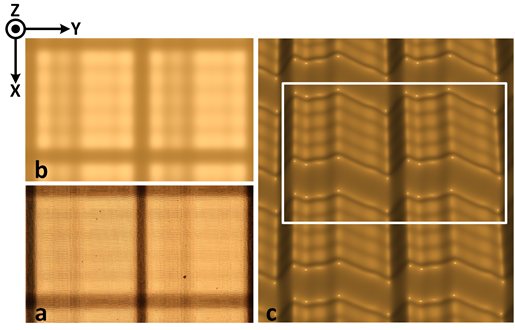GUSTO, NASA’s stratospheric balloon observatory, will bring the Dutch multi-pixel camera system of SRON and TU Delft to the edge of space. It will perform a large-scale observation of the spectral lines from ionized atoms between the stars of the Milky Way. As an extra hardware contribution, SRON delivers a Fourier phase grating. The technique behind it is now published in Optics Express.
To investigate atoms and molecules in the interstellar medium, astronomers look at their fingerprints in a specific type of infrared light: terahertz radiation. GUSTO is equipped with a camera system based on so-called heterodyne receivers to pick up this radiation. The receivers mix a terahertz signal from space with their own signal from a local oscillator to generate a signal at microwave frequency, making it easier to handle for scientists. This approach allows them to capture the atomic and molecular fingerprints at a high spectral resolution of at least one million. It requires a multi-pixel detector, which needs an oscillator with multiple beams of exactly the same frequency and power.
eight beams
Behnam Mirzaei, an instrument scientist at SRON, but located at TU Delft (Optics Research Group), has developed a Fourier phase grating to generate eight beams at 4.7 THz from a single quantum cascade laser. The grating with a periodic, profiled structure according to the Fourier theory, can manipulate the phase of the reflected light to generate multiple beams. A difficulty is that GUSTO demands 2×4 beams with strict requirements on their angular distances and the uniformity of their power. Moreover, the incoming beam size from the laser is smaller than usual.

asymmetric grating
To meet these requirements, Mirzaei has applied a new concept based on an asymmetric-profile. The asymmetric grating breaks the light up into multiple beams travelling in different directions, which are not equally distributed around the reflected direction if the phase grating would be replaced by a flat mirror. In this way the grating makes use of the small size of the incoming beam to create the required angular distance between the multiple beams. In contrast, a conventional symmetric grating, if it has to use a small beam, will create multiple beams with too large angular distance. So it wouldn’t match GUSTO’s optical system The technique is now published in the journal Optics Express.
Publication
Behnam Mirzaei, Yuner Gan, Matvey Finkel, Christopher Groppi, Abram Young, Christopher Walker, Qing Hu, and Jian-Rong Gao, “4.7 THz asymmetric beam multiplexer for GUSTO,” Optics Express 29, 24434-24445 (2021)


